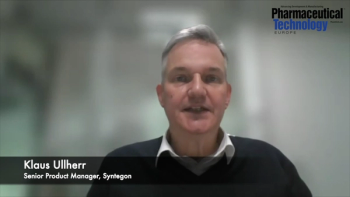
Pharmaceutical Technology Europe chats with Klaus Ullherr, senior product manager at Syntegon, about challenges facing companies when trying to comply with Annex 1 and how automated systems can help.

Pharmaceutical Technology Europe chats with Klaus Ullherr, senior product manager at Syntegon, about challenges facing companies when trying to comply with Annex 1 and how automated systems can help.

The use of artificial intelligence and machine learning has the potential to provide some key benefits; however, there are still significant barriers to the implementation of these advanced technologies.

Regulators, EMA and HMA, have published principles and recommendations on the use of LLMs, which are being increasingly used for daily tasks.

This Behind the Headlines news roundup panel discussion discusses news items such as research results from the June Lab at the University of Pennsylvania presented at the Hanson Wade 9th CAR-TCR Summit; winter vaccine recommendations, particularly for respiratory syncytial virus (RSV) and Beyfortus access and deployment; upcoming early October Nobel prize announcement predictions; digital biology analytics, quantitation, alongside point of care (POC) and distributed manufacturing. The panel also talks about the Biosecure Act and manufacturing reshoring; Federal reserve interest rate cuts of a full half a percent (1); and the general investment and financial outlook.

The new mechanism of action targets cholinergic receptors instead of the standard dopamine receptors.

The agency is recommending that the market authorization for Oxbryta (voxelotor) be suspended so that emerging data may be reviewed.

In this episode of the Ask the Expert video series, Peter Walters, Fellow of Advanced Therapies at CRB Group, discusses factors to be considered in constructing a new facility for cell and gene therapy production as well as using an existing facility to expand cell and gene therapy pipelines.

Two drugs, Miplyffa (arimoclomol) and Aqneursa (levacetylleucine), have been approved by FDA to treat neurological symptoms associated with Niemann-Pick disease, type C in adults and children.

FDA’s Darby Kozak provided commentary on the anniversary of the Drug Price Competition and Patent Term Restoration Act of 1984.

The agency is recommending the extension of the smallpox and mpox vaccine, Imvanex, to adolescents aged 12 to 17.

Contract organizations offer assistance when managing changes to material suppliers during a product’s lifecycle.

The approval of EBGLYSS (lebrikizumab-lbkz) by FDA puts a new biologic treatment for moderate-to-severe atopic dermatitis on the market for patients whose symptoms are not well controlled with topical treatments.

Approvals were recommended for treatments of ovarian cancer, lung cancer, bleeding disorders, respiratory disease, and more.

During a presentation at the PDA/FDA Joint Regulatory Conference, Nicholas Violand of Johnson & Johnson and Paul Palmer of Paul R. Palmer Limited discussed how aging facilities can impact the quality of pharmaceutical products.

Greater collaboration and understanding are needed to ensure the correct grade of excipient is used in drug products.

CDER’s Jonathan Chapman, senior policy advisor, and Takeda’s Paulien Groll, head of Compliance Excellence, discussed how companies can be proactive with their CAPA strategies instead of reactive, at the 2024 PDA/FDA Joint Regulatory Conference.

In this paper, the authors introduce a method that combines ion exchange chromatography with an easier-to-perform, simpler one-step post-column derivatization that is selective to nitrite and visible spectrophotometric detection to allow high sample loading volumes without affecting resolution.

New technologies improve efficiency and remove operator intervention.

Viral vectors and other complex biologic modalities require more specificity and higher sensitivity to detect and distinguish contaminants.

Qualifying material suppliers is a crucial step in ensuring safe and effective drug products.

Bio/pharma companies should be approaching their decarbonization journey as a strategic business move for the future as industry stakeholders are placing greater value on sustainability.

What impact will the AI Act have on pharma and digital medicine?

The approach makes use of clinical mass spectrometers that are already available in hospitals around the world.

Phase III trial results showed that Imfinzi (durvalumab in combination with chemotherapy reduced the risk of recurrence, progression, or death by 32% in patients with resectable non-small cell lung cancer before and after surgery.

In this episode of the Ask the Expert video series, Susan J. Schniepp, distinguished fellow at Regulatory Compliance Associates, and Siegfried Schmitt, vice president, Technical at Parexel, discuss submitting biologics license applications and working with suppliers.